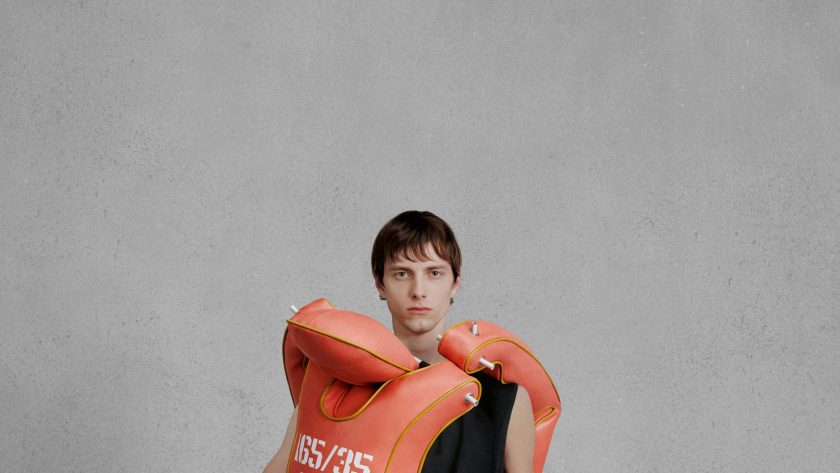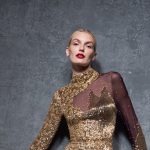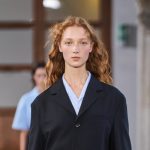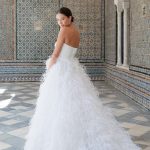To mark his 10th anniversary, Craig Green is launching a two-in-one collection. He’s worked on an amalgamation of fall 2023—available to buy now—and spring 2024, coming in six months. Then again the principle of making two things happen at once has been Green’s modus operandi since day one.
What he does is fashion as art or the other way around. Pragmatic clothes and emotional depths are inextricably twinned and always doused in beautiful color. “We wanted this kind of duality,” he began, previewing his collection on a dull London summer’s day in his East End studio. In front of us was a surreal sight: one of what he called his “carpet-upholstery men,” a model covered head to toe in curlicue-pattern 3D-pile fabric, all the way down from semi-unzippered balaclava to mittens and moccasins. “I liked where you could see the figure underneath but also see this kind of overly ornate exterior,” he remarked. “I guess it’s the idea of the difference between what you put on show and what is really happening underneath.”
There you have it. The attraction of the jacket and trousers, embroidered in a tufted technique derived from what Green described as “collegiate embroidery badges,” is that they’re extractable as highly desirable and wearable luxury menswear—couture, even. This while also being couched (forgive the pun) in something unsettling about masculinity.
There are chapters built into all of Green’s collections. The next, equally extraordinary and ordinary: men in quite plain Green-style suits holding various padded and piped articulated forms around themselves. “When we were researching, we found a lot of images of padded bodies that are used for practicing wrestling. They’re sports equipment you use to learn how to fight somebody,” he explained. “It’s a strange way to learn because there’s no pushback. There’s no human. It’s kind of an inanimate object.”
Martial-arts themes have been embedded in Green’s work ever since his shades-of-blue judo- or jujitsu-influenced Silent Protest collection made grown men and women cry a decade ago. The making of the abstract forms in this one goes even further back to his relationship with his godfather, an upholsterer.
“It was actually really nice to work on this because he was the first person that taught me how to sew. Before I even went to college, we made my first
garments. And it’s strange because I remember my first-ever fitting with Louise Wilson for my MA collection. The night before I had a huge freak-out at my mom’s house and I was like, ‘It’s all rubbish! It’s gonna be a disaster.’ And my godfather stayed up with me all night and cut and remade everything with me.” Green’s face lit up. “And then it was a success.”



